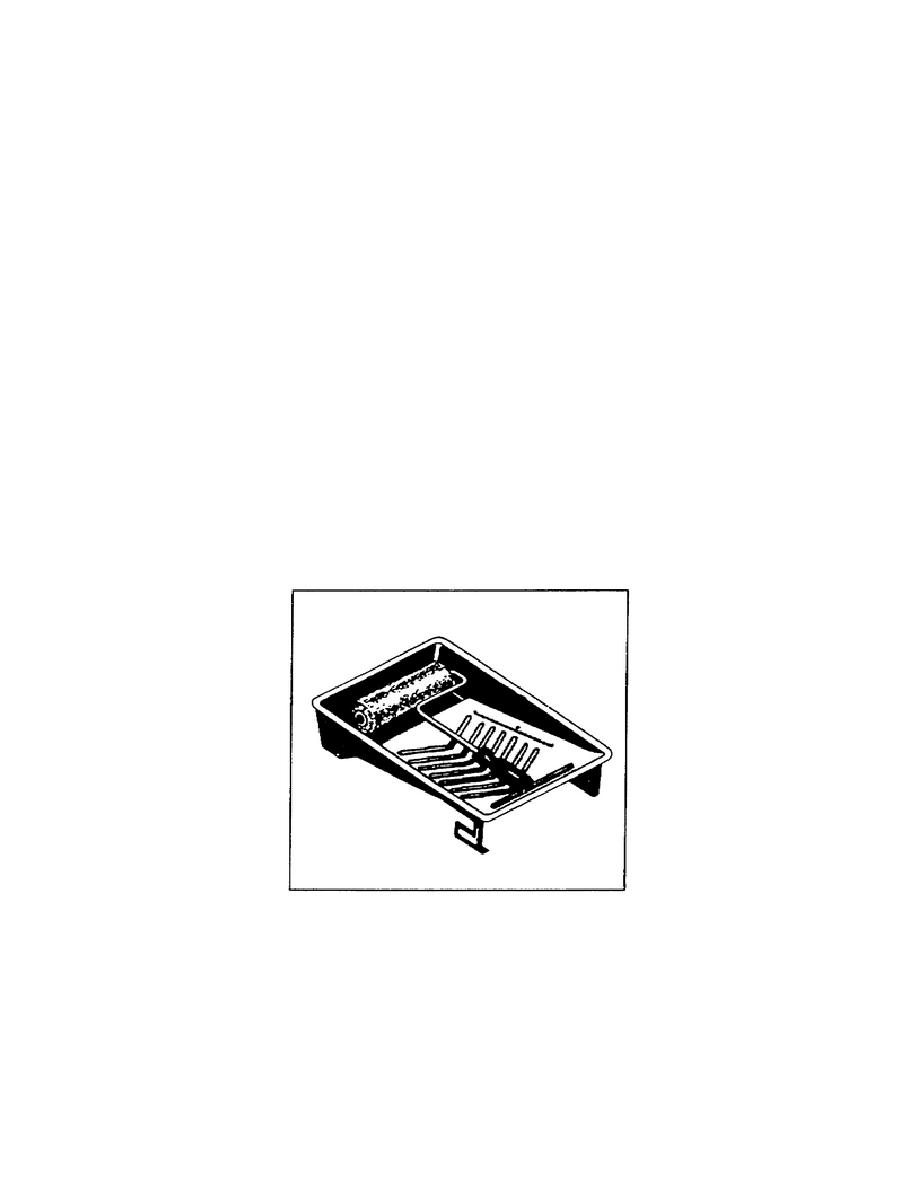
b. Cover Care. Most rollers are constructed with covers that can be removed from the holder
for cleaning. The cleaning materials for covers are determined by the type of paints used. For water-
based paint, use soap and warm water; for enamel, use mineral spirits or turpentine followed by soap
and warm water; and for shellac, use denatured alcohol, followed by soap and warm water. Dry the
roller cover thoroughly before storing. When the cover becomes worn or unusable, replace it with a new
one.
c. Sizes. The size roller you use will depend on where you are painting. Common sizes of
rollers are small and industrial:
Small rollers are 1 1/4 to 3 inches wide and are used to apply paint next to windows, door
openings, and at corners where it is difficult to use larger rollers.
Industrial rollers are available in widths up to 18 inches. The handles of industrial rollers
are designed to accommodate a push-broom or dust-mop handle so that floors can be
painted without kneeling and ceilings and high places can be reached without the use of
scaffolds.
d. Paint Roller Trays. A roller tray (Figure 3-36) is usually a shallow, rectangular container
made of metal. The tray is used to apply paint to the roller, and the tray size is determined by the roller's
width. To control the amount of paint that stays on the roller, pull the roller over the ridges in the
bottom of the tray. Clean the roller first, then clean the tray with the same materials you used to clean
the roller.
Figure 3-36. Paint roller and tray
3-29
EN0562



 Previous Page
Previous Page
